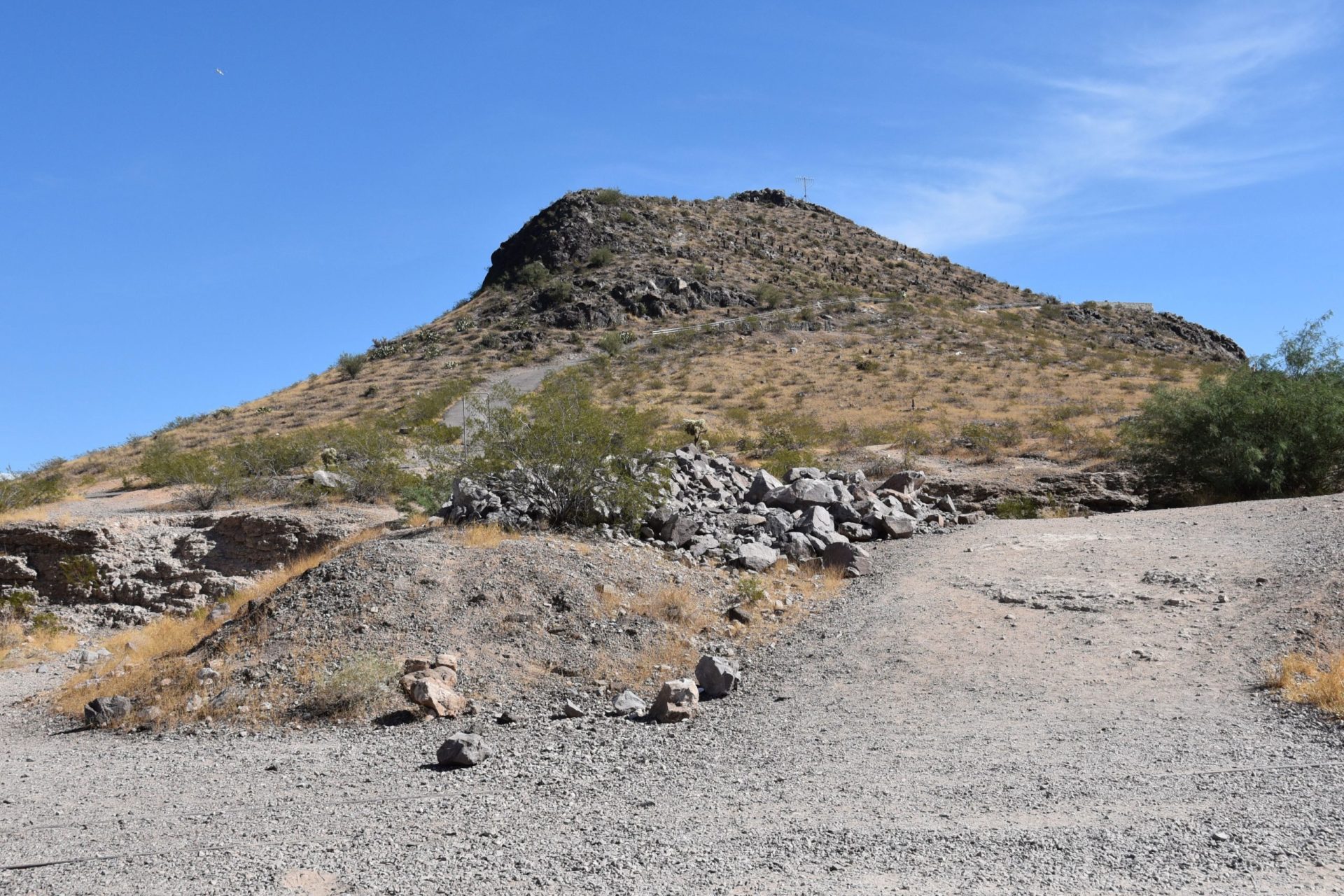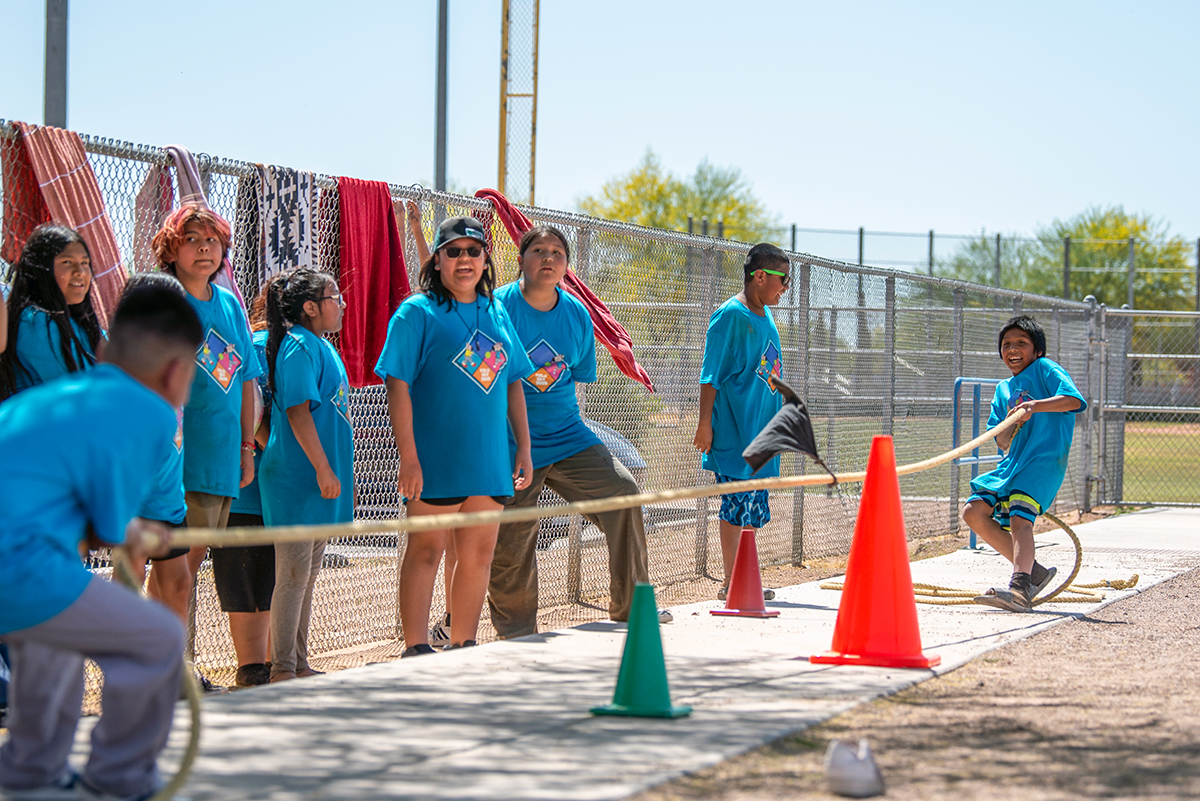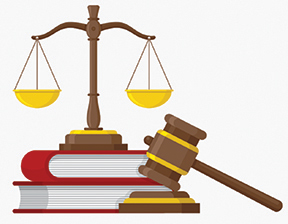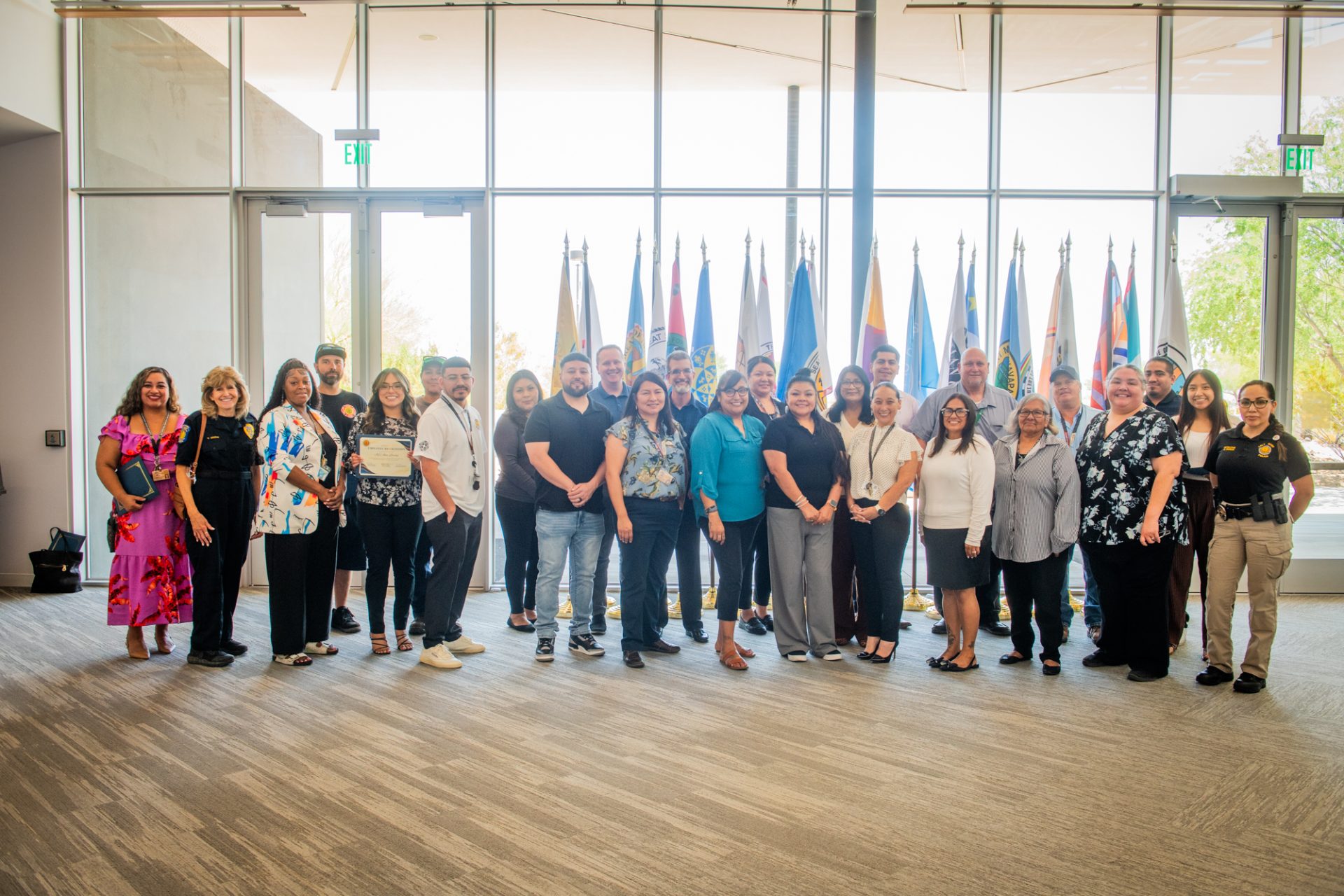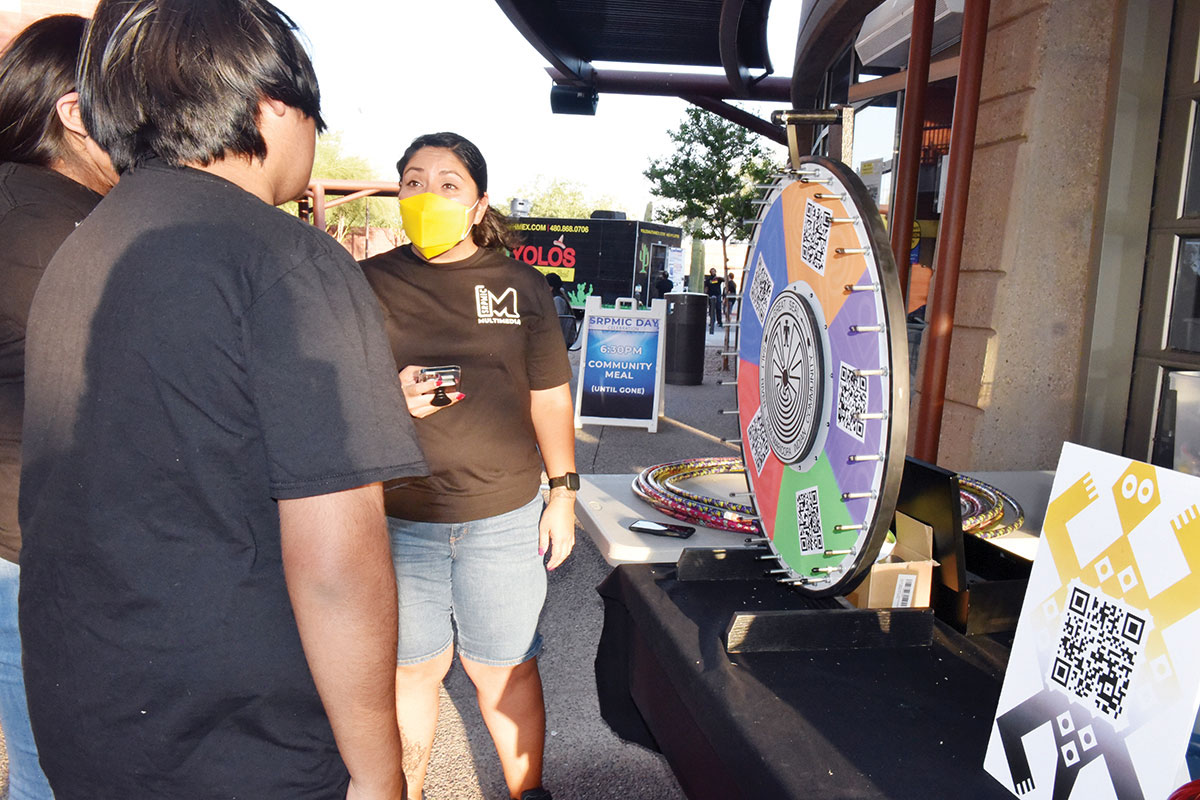VIEWS: 4786
January 1, 2022Community Continues to Monitor Educational Park Plan at Tempe Butte
Tempe Butte in downtown Tempe, also known in O’odham as Oidbaḍ Do’ag and in Piipaash as Xwe Nyakuuly, is a culturally significant site for the Salt River Pima-Maricopa Indian Community and the Four Southern Tribes of Arizona.
Tempe Butte was added to the National Register of Historic Places in 2011 after the City of Tempe submitted a nomination which recognizes the historic functions of the butte as a religious petroglyph site and a domestic Huhugam village site.
The land surrounding the base of the butte has been largely ignored in recent years, as hikers and other foot traffic have contributed to makeshift trails, littering and destruction of natural plant habitat.
“Our Huhugam [ancestors] actually terraced the side of Oidbaḍ Do’ag, and they domesticated and grew Huhugam agave. When it rains, you can see that some of the vegetation is darker in some areas than others. The terracing [still] seems to stand out,” said Community Garden Coordinator Jacob Butler.
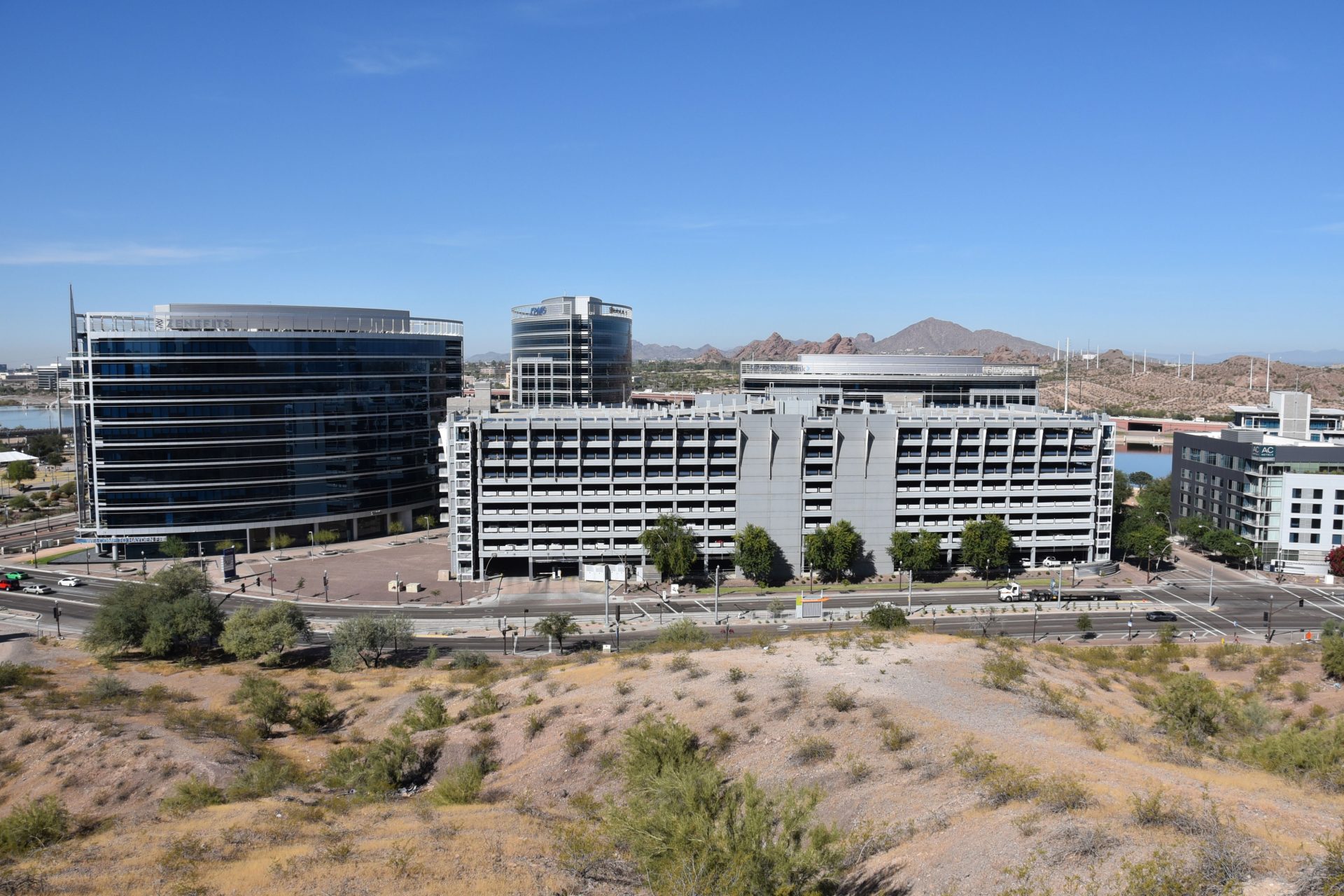
Looking down from Tempe Butte to the area mentioned in both Peter Buseck’s plan and the City of Tempe’s RFP plan. This part of the butte (bottom middle of photo) shows remnants of a terrace where agave was traditionally harvested using rainwater that fell from the top of the butte. Stories are traditionally told from this location, where the different mountain ranges and sites are now blocked by some tall buildings downtown.
“But a lot of that is gone because of foot traffic, and the terraces just haven’t been tended to. There is also hedgehog cactus, which is endangered. This is a natural habitat for the cactus, but you can see along the trails that they are dying.”
Butler said that Community members come to Oidbaḍ Do’ag to tell stories that are passed down.
“When you’re here telling a story, you not only tell the stories of how we existed here on this land, but also how we are associated with these archeological and historical sites,” said Butler.
“Places like Hole in the Rock, the Papago Buttes, the Estrellas and South Mountain, those places have stories and are connected to this area and the people here. We want to continue those opportunities to pass on our heritage in those stories, but with the buildings here, and the line of sight being cut off, it’s hard to do that, because you have to imagine something that you can’t see.”
In a City of Tempe Historic Preservation Commission meeting on November 10, Peter Buseck, a Tempe resident of more than 60 years, addressed everyone in attendance about a plan to restore and beautify this site.
Buseck feels that this portion of land in question has been abused, desecrated and neglected, and he wants to look into turning it into a public educational park that would preserve the land. He sought out input by local tribes and offered to pay about $1.5 million out of his own pocket for the park to be built.
However, the City of Tempe now has a different plan for the land, and it created a request for proposals (RFP) for private entities to submit bids to profit from caring for the land.
Educational Park Proposal
As an avid hiker and visitor of Tempe Butte, Buseck came up with the idea for an educational park while hiking a nature trail at Wild Horse Pass. It was there where he saw educational signage featuring the O’odham and Piipaash vocabulary words for features along the trail. Buseck considered this to be a potential model for Tempe at the foot of Tempe Butte, which he believes would attract tourists who could then learn about the tribes in the area.
Buseck said that as early as 2018, he met with City of Tempe council members and department heads to discuss ways of beautifying Tempe Butte. He said that he was told that the SRPMIC would need to be consulted, and that it would be difficult to work with the tribes, but that the City of Tempe would try to get the Community involved.
After two years without any action, Buseck learned that the City of Tempe had a (now former) historic preservation officer, John Southard, who could help him connect with the SRPMIC.
In April 2021, City of Tempe staff, which included Southard and Deputy Community Development Director Alex Smith, met with Buseck, Butler and SRPMIC Tribal Historic Preservation Officer Shane Anton to discuss Buseck’s proposal.
The next step was to create a detailed landscape plan. The firm Logan Simpson, which specializes in landscape architecture, environmental planning and tribal consultation services, was identified as a potential consultant.
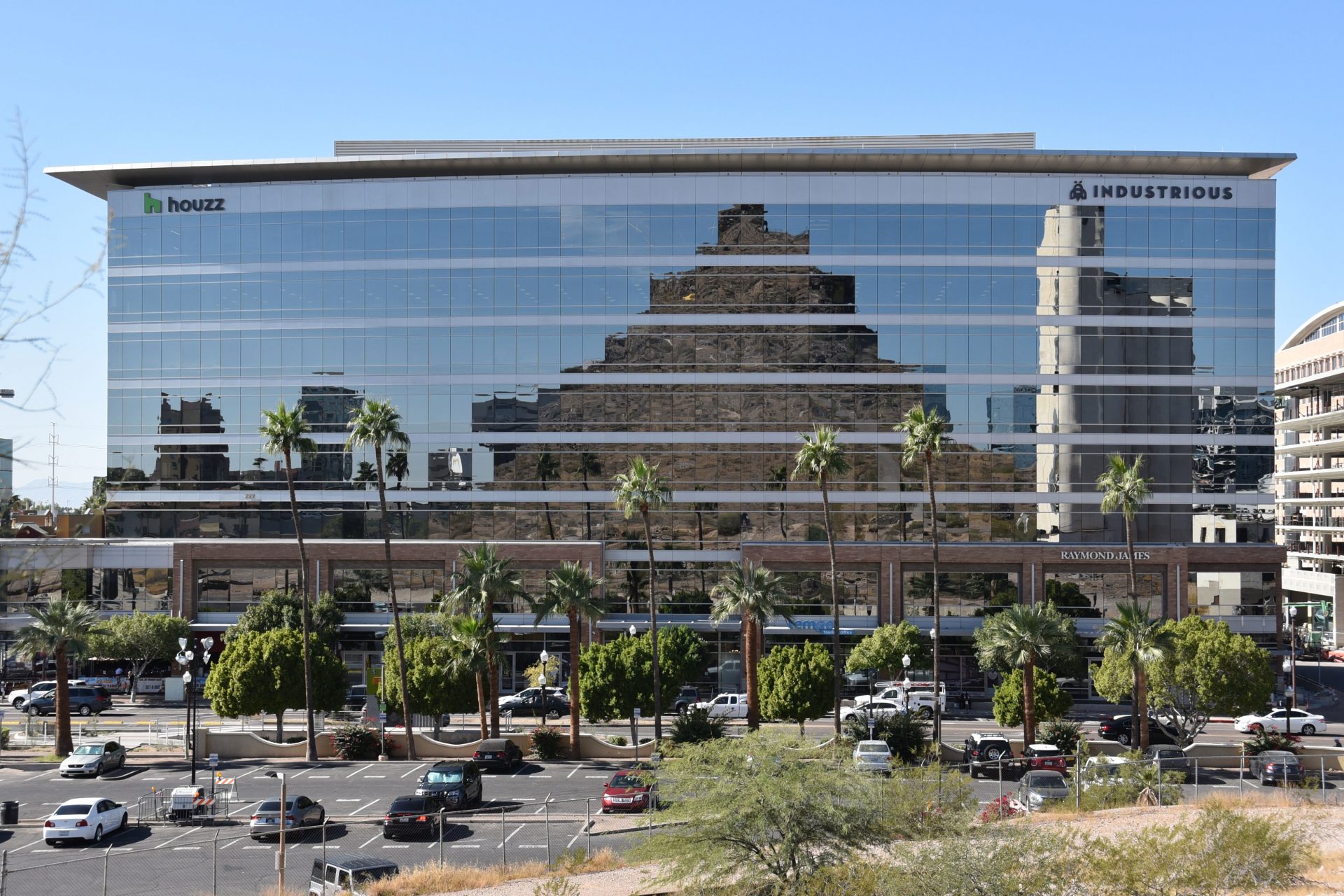
Buseck said that he offered to pay for the plan to sidestep bureaucratic roadblocks, and that both the City of Tempe and SRPMIC knew of and approved of this effort.
Butler helped Logan Simpson’s landscape architect by making suggestions for plants to be incorporated into the proposed park. In an area that is already mostly developed, Butler feels that a plan like this would be a perfect opportunity to save the portion of land that isn’t developed.
Logan Simpson prepared the plan, and on September 10, after some revisions, the conceptual design for the park was completed and sent to the City of Tempe.
Later on the very same day, the city issued RFP No. 22-050 for a private lease and development opportunity to be bid on by interested parties. The RFP includes the same land that is in the conceptual plan for the park.
“This [park plan] was deemed compatible with tribal traditions and shows respect for tribes. It would be good for Tempe. And so it seemed like a win-win situation,” Buseck told O’odham Action News.
“Then, out came the RFP, which I felt blindsided by. And all of the sudden, all of the discussion of the park was frozen [by the City of Tempe]. I just feel that’s wrong.”
The City of Tempe said in a statement that they have no comment on what happened with Buseck’s proposed plan, or if it was received by the proper channels at the city.
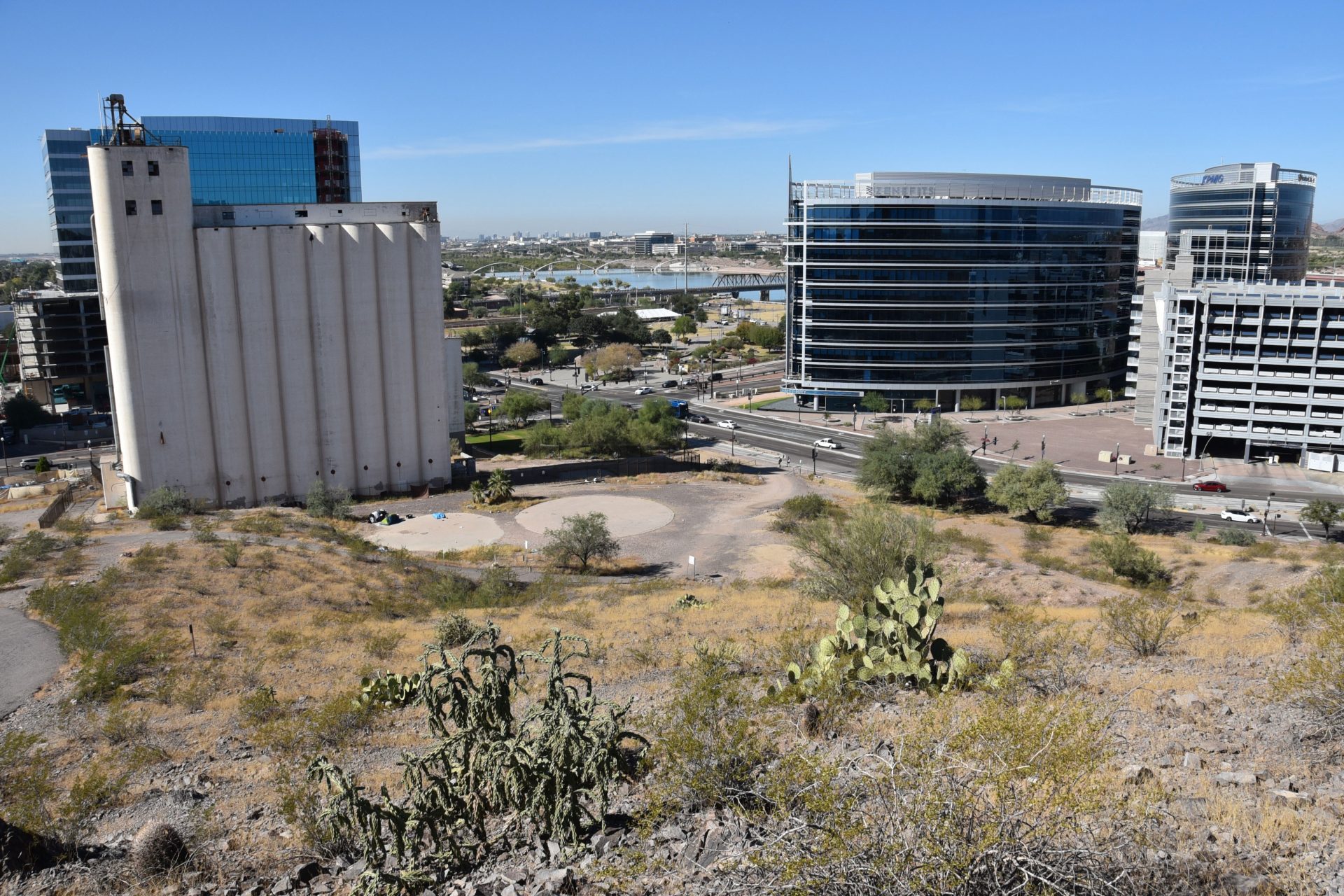
City of Tempe’s RFP
RFP No. 22-050 was issued on September 10, with a deadline for inquiries and questions of October 8. The deadline for proposals to be submitted was November 4.
The RFP states that it is for the “lease and development of city-owned land consisting of approximately 5 acres comprising the Hayden Flour Mill located at the southeast corner of Mill Avenue and Rio Salado Parkway, Tempe, Arizona.”
This land, according to the city, is the “disturbed” portion of the butte, roughly 1,180 feet above mean sea level, with potential areas of undisturbed portions of the butte along the rail cut and former quarry area.
Within the RFP, the city asked the interested parties to “incorporate significant archaeological features, integrating both arts and cultural elements that tell the story of the property’s rich history, represent the full diversity of Tempe’s founding citizens, and respect the Butte’s significance to the O’odham, Piipaash, and their Ancestors.”
Tempe is seeking to enter into a long-term master lease that allows the city to remain the owner and ultimate steward of the Hayden Flour Mill. In exchange, the master lease would give the joint-venture development team full creative and managerial control of the property’s design, programming, construction, financial strategy, subleasing, operations and maintenance.
In section IV of the RFP, the city states that, for this particular parcel of land, it is seeking “creative, feasible proposals for the rehabilitation of the mill and silos and the redevelopment and reuse of the remainder of the 5-acre City-owned parcel into a mix of uses for a family-friendly project designed to appeal to all ages and reflecting the rapidly evolving lifestyle environment of Downtown Tempe.”
The City of Tempe told O’odham Action News that according to state procurement law, only the names of entities responding to an RFP can be revealed at the time the RFP closes.
The City of Tempe received two submissions: the team of Venue Projects and Sunbelt Holdings, as well as DMB Associates. The city is evaluating a variety of options that could be undertaken to incorporate this proposal into any future project.
“While the submittal is evaluated, and the city engages in intensive due diligence, Tempe representatives cannot discuss the matter. As the City wants to be a good steward of this iconic property, consideration of these proposals may take months,” said City of Tempe Public Information Officer Kris Baxter-Ging.
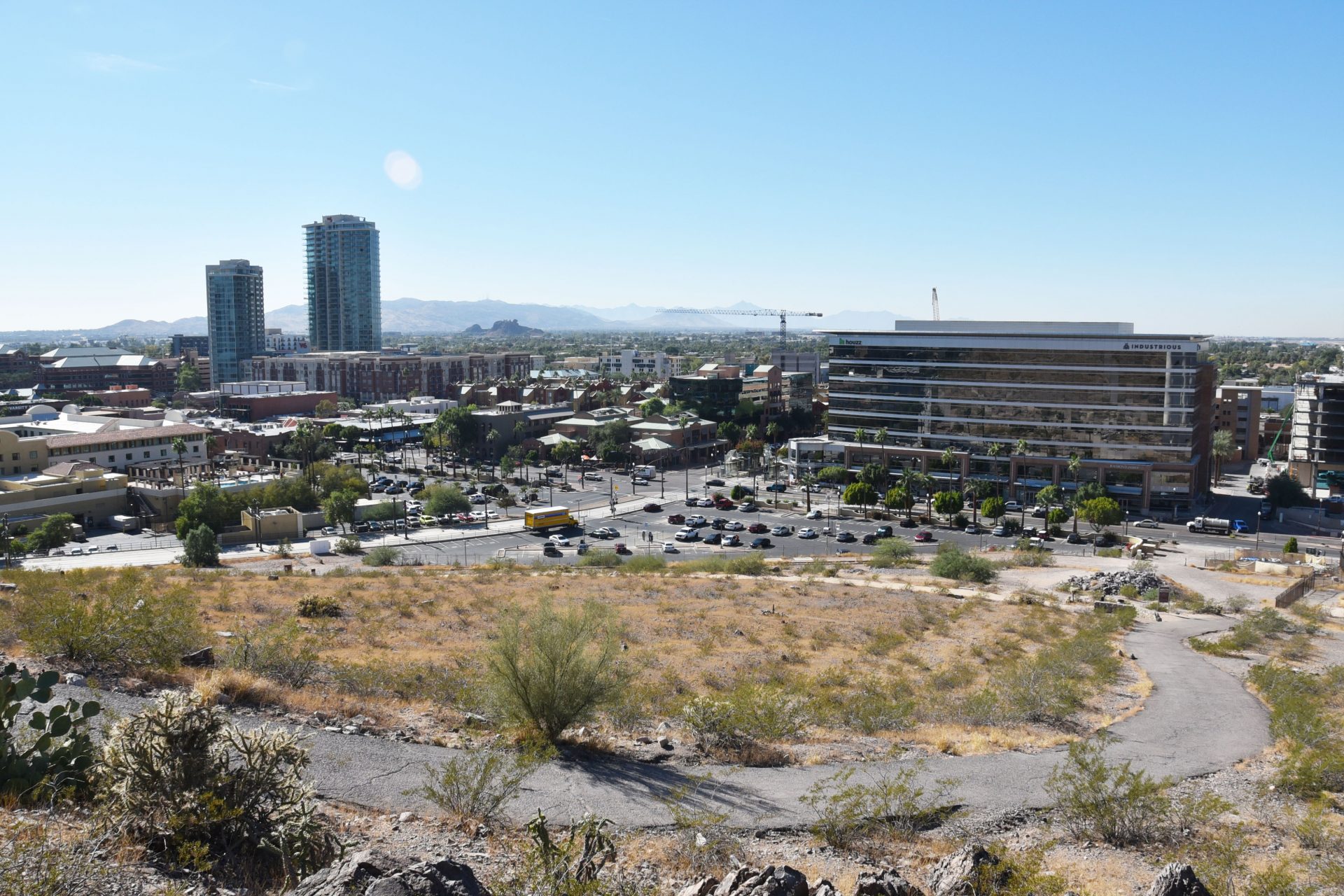
City of Tempe Land Acknowledgement
On January 14, the City of Tempe passed a land acknowledgement resolution that recognizes present-day Tempe as being culturally affiliated with the O’odham, Piipaash and their ancestors, which means that the city takes into consideration local tribal input when it comes to land-use decisions, ceremonies, educational endeavors and holiday observances.
You can read the full land acknowledgement at http://oan.srpmic-nsn.gov/city-of-tempe-acknowledges-oodham-and-piipaash-land/.
In January, City of Tempe spokesperson Nikki Riley told O’odham Action News that Tempe has a history of working in partnership with the Four Southern Tribes in particular as it relates to the care and maintenance of Tempe Butte/Oidbaḍ Do’ag.
“In recent years in that area, we have collaborated to [remove] underground power lines, remove communication towers from the summit, minimize the visual impact of the water tanks and clean up graffiti,” Riley said. “In addition, we are proud to work collaboratively on responsible, respectful archaeological work when planning, approving and building public or private developments. Tempe also reserves a seat on the city’s Desert Conservation Commission for a representative from a tribal nation.”
The city said that any development plans that would affect Tempe’s historic buildings would be subject to review by that commission.
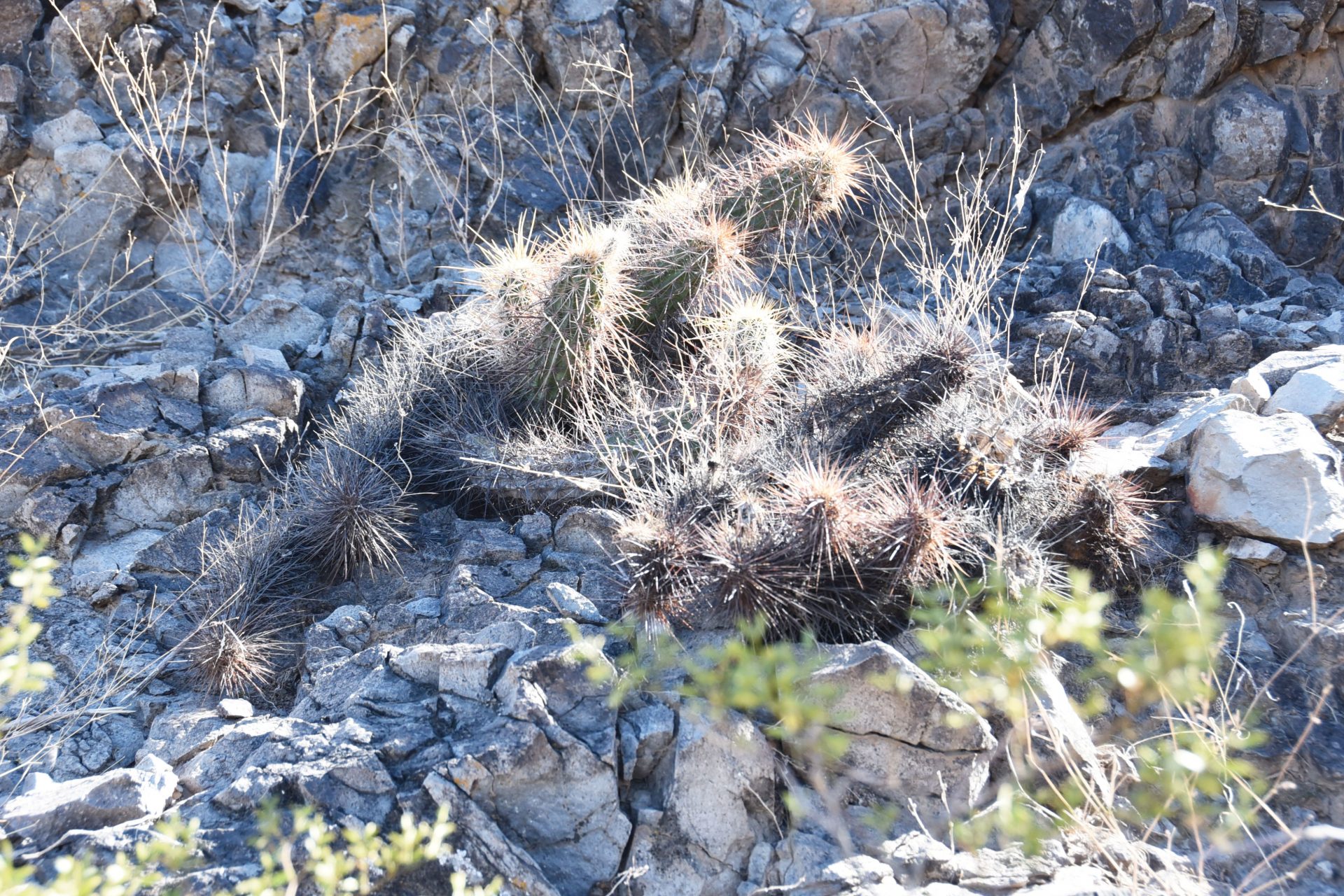
Anton, who had a hand in helping Buseck with his proposed park plan, said that the SRPMIC Tribal Historic Preservation Office was pleased with the City of Tempe’s commitment to base land-use and development decisions partly on the Community’s cultural heritage views.
“We were equally pleased when they memorialized this commitment by providing a resolution acknowledging the same,” said Anton.
“But recently [we have questioned] that commitment, when discrepancies in what we understood to be cultural and historic review processes were ignored or bypassed. Our office also aligned with Mr. Peter Buseck’s offer to naturally beautify and restore its health as a traditional cultural property (TCP) by funding a landscape mitigation project for Oidbad Do’ag. As much of Tempe (and metro Phoenix, for that matter) is exploding in economic development and urban growth, areas of open space, parks, and known places of traditional and cultural significance need to be protected and enhanced to provide a balance and sense of well-being to all who reside here.”
Anton said that those discrepancies refer to the omission of this project going through otherwise normal procedures.
After discussions with Southard, Anton said that he understood that most or all economic development projects get notice and review by the City of Tempe’s Historic Preservation Office, and occasionally the city’s Historic Preservation Committee, to ensure compliance with city, state and sometimes federal regulations.
“We [the Tribal Historic Preservation Office] had a great working relationship with the city’s Historic Preservation Office,” said Anton.
“We understand that we are no longer the only people here and we should do our best to work cooperatively with our neighboring cities … this should include adherence to policies of cultural review and communication on projects, especially those that we have made known to our neighbors are especially sensitive and important. Based on what has transpired regarding Tempe’s RFP 22-050 and Mr. Buseck’s offer, I struggle to believe this is being done.”
The City of Tempe said in a statement to O’odham Action News that the city does not have a standard written policy to consult with tribes on land disturbing activities.

